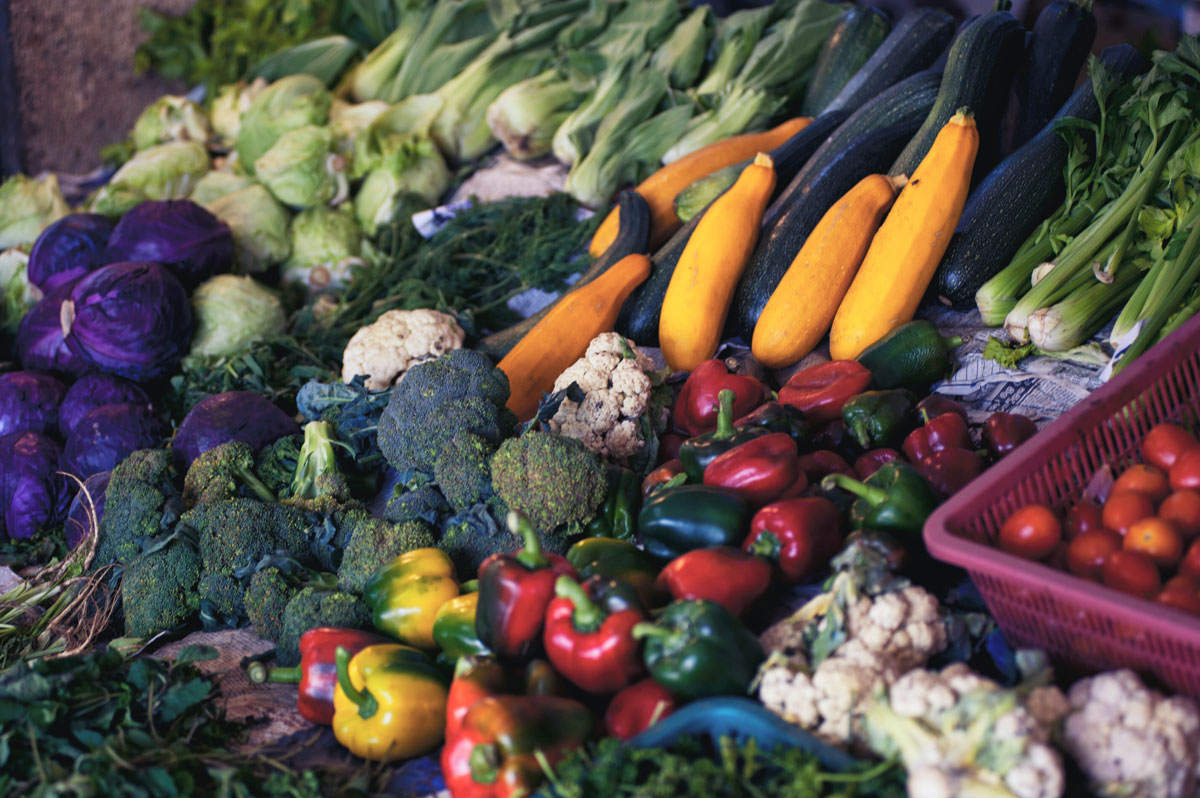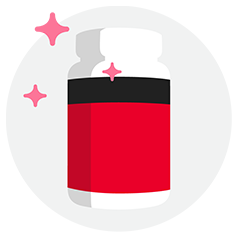Beating Candida: the 5R approach

Under a microscope, Candida is simply a type of yeast, naturally present in small amounts throughout our bodies. But when this tiny yeast is given the right conditions, it can grow out of control. On top of the undesirable symptoms Candida overgrowth can cause, it can also be difficult to get rid of. But using the 5R approach is a proven method for ridding the body of Candida for good.
What is Candida overgrowth?
Candida, or Candida albicans is a type of yeast that can be found on our skin and inside the body—including the mouth, throat, gastrointestinal tract, and genitals. The presence of Candida is completely natural and harmless as it’s usually found in small amounts. When our gut microbiome is out of balance due to infections, poor diet, stress, antibiotics, etc., our friendly flora begins to decline—the exact environment in which the opportunistic Candida thrives, leading to Candida overgrowth, or Candidiasis.
Common symptoms & long-term impacts of Candida overgrowth
The telltale signs of an overgrowth include digestive issues, brain fog, rashes, aching joints, low moods, and fatigue. Candida can also be the culprit behind other conditions, including leaky gut syndrome, inflammation, and newfound food intolerances. It even competes with our body for vital nutrients, stealing them to grow. Suddenly the symptoms of rashes, brain fog, and exhaustion begin to make sense.
What’s the best way to beat Candida overgrowth?
Most Candida protocols focus on diet, so let’s take a look at the 3 types of macronutrients and how they impact Candida overgrowth:
- Carbohydrates: Carbs are essentially sugar molecules, and are classified as simple (sugar) or complex (starch and fibre). While carbs fuel our brain and muscles, since they are broken down into glucose, they can contribute to Candida overgrowth.
- Proteins: Proteins are made up of one or more long chains of amino acids. Most foods that are high in this macronutrient are safe to eat while on a Candida protocol, but some like grains or dairy are usually removed as they can cause digestive issues.
- Fats: Last but not least are dietary fats, classified as either saturated (mostly animal-derived) or unsaturated (mostly plant-derived). Some foods that contain saturated fat can trigger Candida overgrowth, making it best to stick with the unsaturated category.
However, in addition to being opportunistic, competitive, and every other adjective we wish it wasn’t, Candida is also highly adaptable—even to starvation. It can create a back-up nutrient supply by breaking down its own glucose storage. And when that runs out, it has yet another way to stick around: hibernation! So along with diet, we need to add the right anti-Candida remedies for a detox to be effective long-term. That’s where the 5R multi-faceted framework comes in.
Remove and replace: dietary adjustments
Dietary changes center on Removing foods that irritate the gut and Replacing them with nutrient-packed alternatives. Remember when we mentioned healthy bacteria keep Candida growth at bay? In addition to removing foods that Candida thrives on, let’s support the good bacteria by replacing those foods with what they need to get the job done.
What should we remove…and why?
While sugar is definitely Candida’s superfood, there are a couple of additional food categories here to consider. By eliminating them all, we really target all of Candida’s different sources of fuel. Let’s look at what to remove:
Foods that feed Candida: Candida thrives on glucose, the simple sugar molecule found in foods like grains, starchy vegetables, fruit, and dairy. Make sure to look out for products that may not be as obvious in terms of their glucose content. These include alcohol, condiments, and processed meats.
Foods that contain solanine: Solanine is a compound that can trigger inflammation, enabling the growth of Candida. It is found in nightshade vegetables such as tomatoes, potatoes, and eggplants.
Foods that contain yeast: As we are working to fight yeast overgrowth, foods that contain it or are fermented should definitely be removed. Examples include miso, tempeh, kimchi, and malted products.
Caffeine: As much as it can help wake us up, caffeine spikes blood sugar, which exhausts our nervous and immune systems. This is especially detrimental when we are already fighting Candida overgrowth! We should therefore be mindful and skip the coffee, tea, pop, and energy drinks. Even decaf coffee and tea may still contain small amounts of caffeine so those should be avoided as well.
Removing these foods for a total of 30 days can help you combat Candida overgrowth effectively, as it targets all its potential sources of fuel. This may seem overwhelming, as it’s certainly a long list of foods (some of which may be staples in your current diet). However, it’s important to remember that cravings that occur during this period of time are no match for the awful symptoms of yeast overgrowth—and the long-term effects it brings. Simply put, it’s tough to eliminate all these foods, but definitely worth it in the end.
Which foods support Candida detox?

Replace the above foods that directly and indirectly fuel the overgrowth of Candida with an abundance of whole foods. Packed with fibre and essential fatty acids, they are the best way to nourish your body:
- Fresh, non-starchy vegetables
- Legumes
- Poultry
- Meat
- Nuts and seeds
- Herbs and spices
Enjoy these to your heart’s—and gut’s—content. For delicious meal ideas, check out these recipes.
Repopulate, Repair and Rebalance with effective supplementation
With something as shrewd as Candida, it’s crucial to be a few steps ahead with many natural remedies up our sleeves. Let’s Repopulate, Repair, and Rebalance our gut microbiome and show Candida who’s boss.
Caprylic acid: A medium-chain fatty acid found in coconut oil, caprylic acid is able to disintegrate the protective layer of the Candida cell, without which the yeast cannot function. Caprylic acid can be consumed directly or used in oil pulling (swishing it around your mouth for 10-20 minutes).
Licorice root: With anti-inflammatory and antimicrobial properties, licorice protects your intestinal lining from pathogens like Candida. To really get the benefits of licorice, a supplement that can compact a strong enough dose is ideal.
Fibre intake: As the caretakers of our gastrointestinal tract, fibre essentially cleans up the toxic byproducts left behind by Candida, making sure they exit as swiftly as they were formed. Fibre also feeds the good bacteria—like our friends from the lactobacillus family, helping them do their job. Soluble fibre, like psyllium husk, is fantastic due to its laxative effect, getting things moving, faster. Psyllium is also a great source of prebiotic fibres, fueling our friendly bacteria strains, helping bring balance back to the gut microbiome!
Probiotics: And finally, to make up for the depletion of good bacteria, in addition to feeding the remaining ones with fibre, we also need to focus on repopulation. The more friendly flora we have, the less likely it is for Candida to be able to grow, colonize, and wreak havoc. Let’s give these little guys a fighting chance!
We know that it can be overwhelming to make these extensive changes to your diet, but it’s a guaranteed way to make sure your Candida overgrowth is gone for good. If you’re hungry for more guidance, visit The Candida Solution for a FREE guide and questionnaire to help you determine whether you’re suffering from Candida overgrowth, and how to beat it. It features the 5R approach alongside comprehensive lists of foods to focus on and foods to avoid, and the best part–it’s got tons of Candida-fighting recipes to keep you fed while you detox. And if you’re looking for some tips, tactics, and tasty sugar-free recipes delivered straight to your inbox, sign up for our Gut Health Reset. Let’s kick Candida for good!






